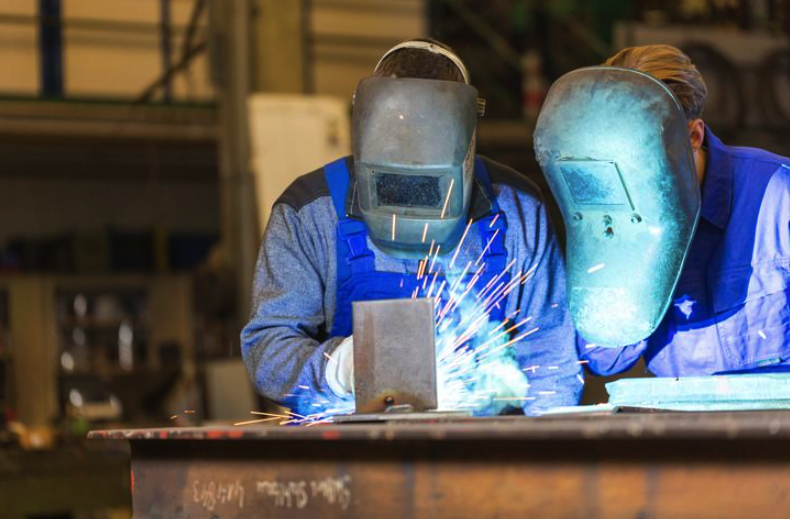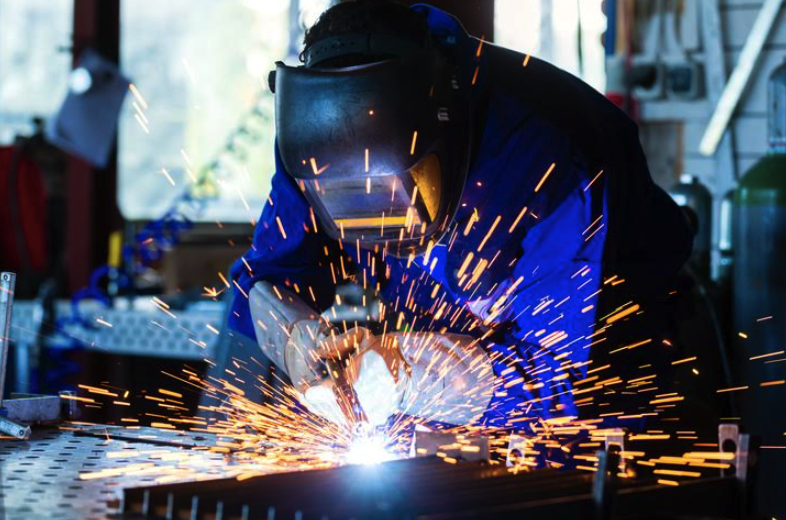Tag: Welder Technician Training

Looking for a rewarding career that can teach you many new skills and allow you to work with your hands to build and fix things every day? Welding might just be the right choice for you. Should you decide to pursue a career in this field, going to welding school can help set you up for a future in this profession. A great welding training program can teach you about the trade through both a theoretical and practical lens.
Those who pursue welding as a career path can open themselves up to a hugely gratifying profession. Here are some reasons why you should consider welding school to fulfill your career ambitions.
Welding Is a Fantastic Career, Especially if You Have the Personality For It
Are you a patient, creative, hard-working individual who relishes the challenge of working in an intense environment? Welding is a career that caters to exactly these kinds of people. Welders are typically subjected to a large amount of smoke and heat, all while wearing heavy protective gear like coveralls and a mask. This type of work requires a great amount of endurance, as well as the knowledge and instincts to be able to join metal pieces together with the utmost care and accuracy. As a trained welder, you might have opportunities to work in several different industries after completing an apprenticeship, such as: manufacturing, oil, construction, architecture, and more. If any of these job prospects interest you, welding could be a great fit for your professional career.

Taking a Welding Diploma Program Can Teach You Many Lessons About the Trade
If you’re looking for a way to gain the foundational knowledge necessary for success in the welding industry, starting your welding training is your ticket. At NATS, our welding program offers students the opportunity to learn about the trade over 55 weeks. During the program, you can learn about concepts such as welding processes, equipment, safety standards, blueprint reading, and positional welding. Furthermore, students at NATS can use our on-campus labs for hands-on learning. Here, processes like MIG (Gas Metal Arc Welding) and TIG (Gas Tungsten Arc Welding) welding are learned through the use of modern equipment. This helps give students practical, real-world experience before even setting out to work in the field.

You Won’t Need Prior Experience to Get Started in Welding Training
At NATS, some students come to the welding program having already gained a bit of welding practice beforehand. “I chose to study welding, because I did it in high school,” says Emily Harrison, a graduate of NATS’ welding program. “I’m a bit of an artist, and I wanted a little bit more knowledge and a little bit more practicality for the future.”
However, those hoping to attend welding school should also note that they don’t need any prior experience to get into the program. Even without any base knowledge of the trade, taking a welding program can provide you with the training to open you up to various career opportunities, often starting out as an apprentice welder to further sharpen your skills in such roles as ironworker, boilermaker, pipefitter, and more. Not only do you not need experience or a university degree to enter the field, but you also have a wide range of career choices available to you—making welding a great choice for fulfilling your professional aspirations!
Do you want to begin your welder technician training?
Contact North American Trade Schools today to learn more!

When you first look at welding symbols, you may be overwhelmed by the seemingly arbitrary shapes and numbers. However, despite what you initially think, these symbols do have deeper meaning—and knowing this meaning will work wonders for your future welding career.
These symbols are often found on welding project blueprints, and are used to communicate between the designer and the welder. Without understanding these symbols, you won’t know what specifications a weld requires.
If you’re interested in becoming fluent in the language of welding symbols, read on!
Welding Symbols 101 for Those in Welding Training
Welding figures generally consist of five main figures: arrow, leader line, reference line, tail, and weld symbol (not to be confused with the welding symbol, which represents the entire diagram). Confused yet? Let’s explain them figure by figure.
The arrow, for starters, points to the part of the diagram where the weld is needed. Attached to the arrow is the leader line, which intersects with the reference line. In the middle of the horizontal reference line is the weld symbol: this represents the type of weld required. Finally, at the opposite end of the reference line, you may find the tail—it is only required for special instructions—which forks off in opposite directions.
How to Interpret Welding Symbols
As you’ll learn in welding training, the location of the weld symbol vis-à-vis the reference line determines which area of the joint you should perform the weld.
If the weld symbol is under the reference line, you should make the weld on the same side as the arrow. However, if the weld symbol is located above the reference line, you should make the weld on the opposite side of the arrow. But if the symbol is on both sides of the reference line, then, as you can imagine, you must perform the weld on both sides.

Understanding Dimensions and Angles in Welding Symbols
In addition to shapes and lines, welding symbols can also include numbers that communicate the depth, diameter, and length of a weld–along with the beveling angle, if applicable.
In many cases, you will find the weld diameter (or width) on the left-hand side of the weld symbol. The length of the weld is found on the right. If the length is not indicated on the welding symbol, you should conduct the weld from the beginning of the joint to the end.
The reference line also plays a part in understanding the dimensions of a weld, just as it did for the weld type. Any dimensions indicated below the reference line pertain to the joint on the side of the arrow. Dimensions above the reference line pertain to the joint on the opposite side. If dimensions are indicated on both sides of the reference line, then you should weld both sides of the joint.
If these numbers, figures, and placements seem complicated, fret not—welder technician training is there to help you decipher these symbols with ease.

Do you want to get your welding diploma?
Contact North American Trade Schools to get started!



